The future of quads?

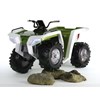
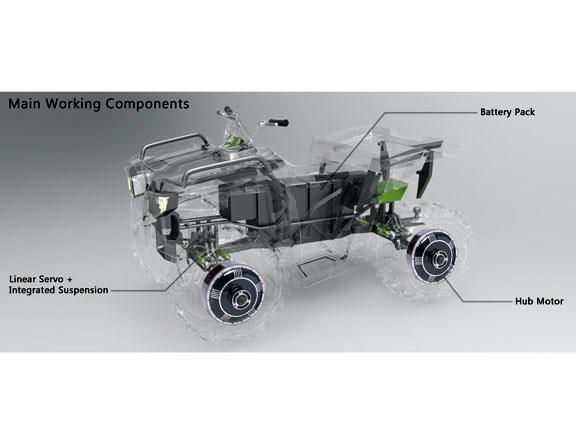

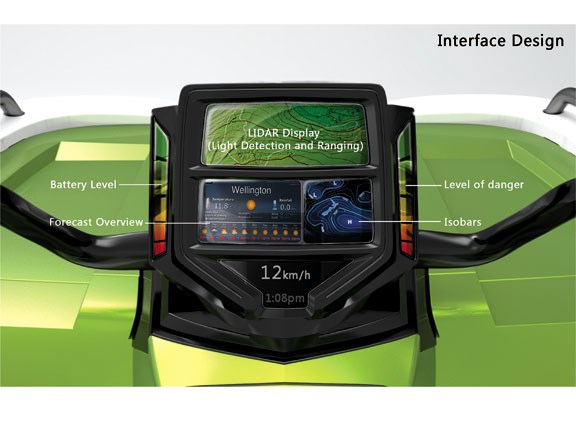

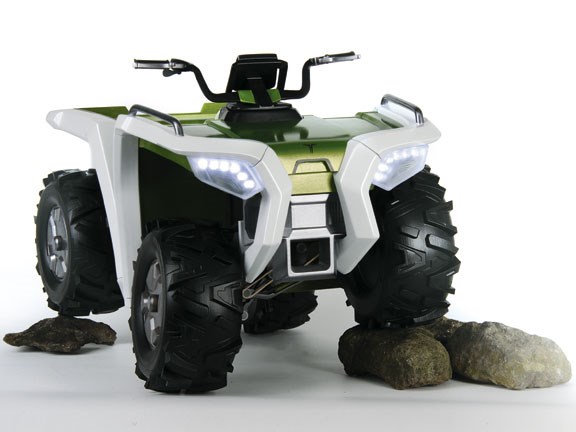

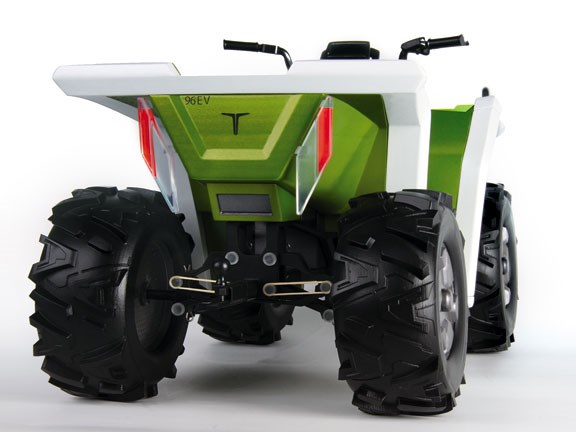


|

|

|

|

|
A spate of deadly quad accidents at the beginning of this year catapulted quad bike safety back into the mainstream media spotlight, and with good reason.

|
|
The future of quads?
|
Despite the risks involved, riders are making poor decisions which ultimately lead to accidents that could have been avoided. Auckland Massey University student Nick Marks spent the last year working on a concept quad aimed specifically at improving safety. While the Tahr concept quad is only a design at this stage, some of his innovations should make manufacturers stand up and take notice.
Nick has been riding two-wheeled motorbikes since he was a nipper, loving the adrenaline rush. But this Auckland design student has turned his attention to quad bike safety in the hope of encouraging some robust debate.
Nick became interested in quad safety during the summer of 2011 after his girlfriend's father had an ugly accident. He was working on a ride on lawnmower which flipped going up a steep gradient. His foot landed in the still spinning blades, slicing off the back off his heel. Although it was a grizzly accident, Nick says it could have been much worse. "The reason why it only chopped off his heel was because it leant up against a shed. Otherwise it would have been on top of him." It has taken years of recovery and, although he can walk again, the scarring is profound and he carries a limp.
The accident prompted Nick to think about how small ride-on machinery, such as mowers and quads, could be made safer. "I realised a lot of different vehicles don't have proper safety aspects built into them." Roll Over Protection Systems (ROPS) for quad bikes are becoming increasingly popular but, for Nick, they're tackling the problem from the wrong angle. "The reason why I chose not to focus on a roll bar is I feel prevention is better than damage control." Although he acknowledged there are some good ROPS available, Nick believed his research would be better placed trying to prevent a rollover rather than stopping one in progress.
Originally he started off experimenting with various ways of stopping quads from rolling, including lowering the centre of gravity, ball bearings and various buoyancy methods. He made an MDF model with all the flexible working parts and came up with a radical, but simple, system. "I named it Auto Balancing Assist (ABA), purely because it would have electric components which would micro manage it." In simple terms, the ABA would use the on-board systems to adjust the quad's angles to better suit the terrain.
One of the biggest decisions he had to make with the design was whether to use a combustion or electric engine. In the end the choice was simple for Nick, based on his assessment of future technology. "Electric motors are developing so fast it is incredible. They (electric developers) just keep proving everyone wrong with what they come up with. One of the quickest motorbikes available today is electric, going from 0 — 100kph in something like 2.7 seconds. Yes they have their issues, but the positives certainly outweigh the negatives."
The Tahr concept does away with many issues in the drive system thanks to the integration of hub motors on each wheel. "Currently there are a lot of moving parts in a quad bike, such as the drive shaft. Where you have moving parts you are also going to have problems, so hub motors help eliminate that." The design is also aimed at the future, and Nick firmly believes quads will end up using electric propulsion. "The technological advances in electric propulsion are staggering. Hub motors will be used in all types of manufactured vehicles, purely because they can be produced so much cheaper." For him it is not a question of if, but when.
Other advantages of hub motors include individual drive for each wheel that is computer controlled and the ability to generate and store electricity. "You get a very quick, instantaneous throttle response from electric motors that you don't with a combustion engine." Hub motors would also be controlled by the on-board computer, limiting movement if difficult terrain was detected.
The quad's battery pack would help lower the centre of gravity, nestled away under the driver's seat. Nick estimated his system would have 108 volts available between charges, capable of powering the quad for up to eight hours nonstop. "Everyone keeps their quad in a shed, therefore power is always readily available."
A Gyroscope would feel the quad's angles, transmitting that information to the on-board computer. A Linear Servo, seen in electronic developments such as 3D printers, would then be used to alter the angle of the quad to better handle the terrain. "Linear Servo's are like a pneumatic system, but electric. They are very rapid, very accurate and very cheap."
Although Nick's Tahr concept quad utilises cutting edge technology, it's designed to look and feel like any other quad bike. During his research, which included visiting many farms, he found farmers to be open to ideas but resistant to change. "If you design anything for them they are probably going to be drawn to what they know, rather than a radical new design."He worked with farmers, listening to their wants and needs in terms of functionality and safety. "It is easy to mock something up with a computer but it is not until you actually talk to farmers that you get a better grasp on what they need."
When he designed the dashboard concept, Nick threw in some items he has learned farmers hold dear. An LCD display unit not only keeps the rider updated with vital bike info, it displays current weather information and forecasts. There would also be a LIDAR display for terrain awareness. "LIDAR is pretty much a radar, but for land-based applications." This would use sensors to read the terrain in front of the quad and report information back to the on-board computer. Any obstacles or difficult slopes could be identified and avoided. LIDAR technology is used in cars already for collision systems.
Nick wants to be clear there is no prototype or working model for sale — this is purely a concept. "I want to stress this is a talking point. I want to raise people's awareness that farm quads could be better. I just want to put it out there to encourage conversation. If I am thinking about this as a 23-year-old student, there must be plenty of others thinking along the same lines as well. We had a year to develop our projects, but I could have worked on this for a lot longer. There are so many different facets of this issue needing to be addressed, you could never hope to solve them all in such a short period of time."
What does the future hold for this design wonder-kid? Based on the strength of his project Nick has been offered a scholarship by Gallagher Group to finish his Masters degree. For his project this year, Gallagher has asked him to redesign one of their solar fence energisers. Nick impressed the company with his research on the design and also the way he interacted with farmers to get their feedback. "It is an honour to work in such an iconic and innovative Kiwi company."
So keep an eye out at the 2020 Feildays, you might just see a Tahr on display.
For the latest reviews, subscribe to our Farm Trader magazine here.
Keep up to date in the industry by signing up to Farm Trader's free newsletter or liking us on Facebook



.jpg)



.jpg)
.jpg)
.jpg)

